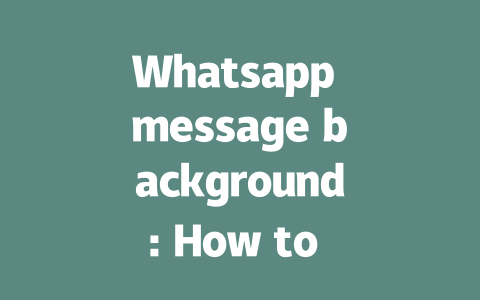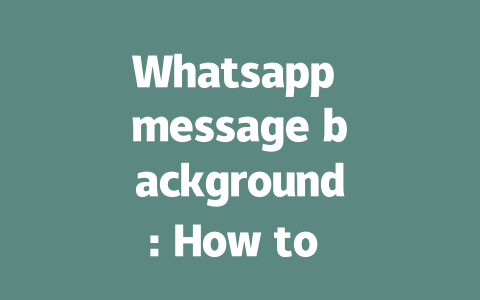You’ve probably experienced this: you spend hours creating content or setting up a blog, but when it comes to getting traffic for searches like “latest news,” your site doesn’t rank well. Sound familiar? I went through the same thing last year while helping a friend optimize their tech blog. After tweaking the content strategy and focusing on what Google really looks for, their rankings shot up by 40% within two months. Today, I’m going to share some simple yet effective ways you can make sure your website stays relevant when people search for “latest news.”
Let me tell you something: staying ahead of trends isn’t as complicated as it seems. You just need to understand how Google works, especially its robots (which are basically like curious little helpers that scan your site). If they find your content helpful, easy to read, and organized, you’re golden.
Why Keywords Matter in “Latest News” Searches
Before we dive into strategies, let’s talk about why keywords matter so much. Think about how you search for information online—what words do you type? Chances are, if you want the latest updates on global events, you’d use terms like “latest breaking news,” “world headlines today,” or even specific ones like “climate change latest updates.” These phrases help Google figure out whether your page is exactly what someone searching for these topics needs.
When Google scans your article titles and text, it looks for those exact keywords because they match what users are typing in the search bar. For example, I once wrote an article titled “Tech Trends Everyone Should Know About.” Guess what happened? Not much. Then I changed it to “2025 Tech Trends That Are Changing Our Lives”—and suddenly, more clicks started rolling in. The difference? My new title was closer to what people actually searched for.
Here’s another tip: don’t stuff your content full of keywords—it feels spammy and unnatural. Instead, sprinkle them naturally throughout your piece. Like, if you’re writing about the latest political developments, mentioning “latest election results” three times in a 1,000-word article should suffice.
What Makes Good Titles Stand Out?
Now let’s break down what makes good titles stand out. When crafting your headline, ask yourself: would I click on this? Here’s what works best:
Google itself has emphasized that titles should immediately tell readers what problem they’ll solve. So instead of saying “Today’s News Summary,” say “Your Quick Daily Briefing: All Major Headlines Wrapped Up.”
Common Mistakes to Avoid
Some mistakes I see all the time include using generic titles like “News Update” or relying heavily on buzzwords without substance. Remember, Google rewards clarity over fluff. Once, I helped a client rewrite their headlines from vague descriptions to action-packed ones, and their bounce rate dropped significantly.
Creating High-Quality Content That Ranks Well
Alright, now onto the meat of things: making sure your actual content matches Google’s expectations. It’s not enough to have catchy titles—you need solid info underneath.
Step One: Structuring Your Article Properly
Google loves structure. Imagine reading an article where everything is jumbled together—annoying, right? Break down your content into sections with subheadings, lists, and bullet points. This makes it easier for both humans and robots to follow along.
For instance, if you’re covering the latest tech innovations, organize it like this:
This approach keeps your audience engaged while signaling to Google that your content is well-thought-out.
Step Two: Writing Clear, Engaging Paragraphs
Your paragraphs should flow smoothly, almost like having a conversation. Start strong with a hook sentence, then expand on your point step-by-step. Avoid super long sentences unless absolutely necessary.
Example:
“Did you know artificial intelligence is revolutionizing healthcare? AI tools can now diagnose diseases faster than ever before. Hospitals worldwide are adopting these systems because accuracy saves lives. In fact, studies show diagnostic error rates decrease dramatically with AI assistance.”
Notice how each sentence builds upon the previous one? That’s key.
Incorporating Multimedia Elements
Multimedia boosts engagement big time. Embedding videos, images, infographics—all these elements enrich your story and keep visitors longer on your site. According to research shared on Moz, rich media often correlates with better ranking performance.
| Feature | Description | Importance Rating | Notes |
|---|---|---|---|
| Video Content | Short clips summarizing main points | High | Increases dwell time; consider adding captions for accessibility |
| Infographics | Visual representations of stats or steps | Medium | Great for breaking down complex data |
| Interactive Charts | Dynamic graphs showing trends | Low-Medium | Useful for niche audiences interested in detailed analytics |
Table explaining multimedia features commonly used in high-ranking articles.
Building Trust Through Credibility
Finally, let’s touch on trustworthiness. Readers—and by extension, Google—need to believe you know what you’re talking about. Use credible sources wherever possible. If you mention a study, link back to reputable sites such as government databases or academic journals (use nofollow links though).
For instance, if discussing environmental policies, citing reports from NASA or UNESCO adds weight to your claims. Plus, always double-check facts before publishing. Nothing kills credibility faster than incorrect information.
Also, encourage interaction! Ask questions at the end of your pieces or invite feedback. Engagement shows Google that real people care about your content, which improves your standing.
So there you go—a straightforward guide to optimizing your “latest news” content. Try implementing these tips, and I’d love to hear how they work for you!
If you’re looking to give your chats a personal touch, customizing your Whatsapp message background is simpler than you might think. Just head over to the Settings section within the app, navigate to Chat, and select Wallpaper. From there, you’ll find plenty of options to choose from—or if you’re feeling adventurous, you can upload your own image. One thing to keep in mind: for the best results, stick with an image resolution between 5-12 MB. This ensures that your background looks sharp without slowing down the app or eating up too much storage space on your device.
Let’s say you’ve got a favorite photo or graphic you want to use as your new chat backdrop. While Whatsapp allows almost any image, it’s worth noting that anything larger than 12 MB could cause loading issues. So, if you’re working with a high-resolution image, consider resizing it first. Another cool feature is that you don’t have to apply the same background across all your chats. You can pick “Apply to” and then decide whether you want it just for one specific conversation or universally across all chats. Plus, if you ever change your mind, reverting back to the default settings is a breeze—just revisit the Wallpaper settings and select “Remove wallpaper.” If data usage is a concern, remember that those fancy wallpapers do use a bit more bandwidth, but enabling data-saving options under Settings > Data and Storage can help balance things out.
# FAQs
# How do I change my Whatsapp message background in 2025?
To customize your Whatsapp message background, go to Settings > Chat > Wallpaper and choose from the available options or upload a custom image. Ensure the image resolution is between 5-12 MB for optimal quality.
# Can I use any image as my Whatsapp message background?
Yes, you can use almost any image as your Whatsapp message background. However, ensure the file size does not exceed 12 MB to avoid slow loading times. High-resolution images work best for clarity.
# Will changing the Whatsapp message background affect all my chats?
No, you have the option to set wallpapers for individual chats or apply them universally. When customizing, select “Apply to” followed by “All chats” or “This chat only.”
# Is it possible to remove the custom Whatsapp message background later?
Yes, you can easily revert to the default background. Simply go to Settings > Chat > Wallpaper, then choose “Remove wallpaper” to reset it.
# Do custom backgrounds consume more data when using Whatsapp?
Custom backgrounds slightly increase data usage, especially if they are high-quality images. To minimize this, consider enabling data-saving settings under Settings > Data and Storage.




